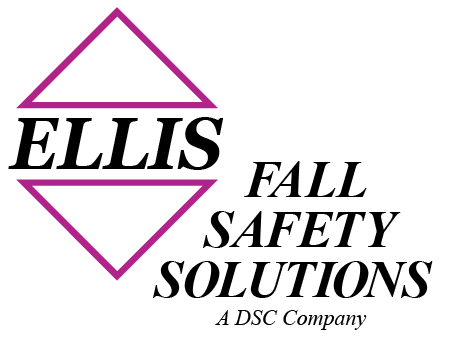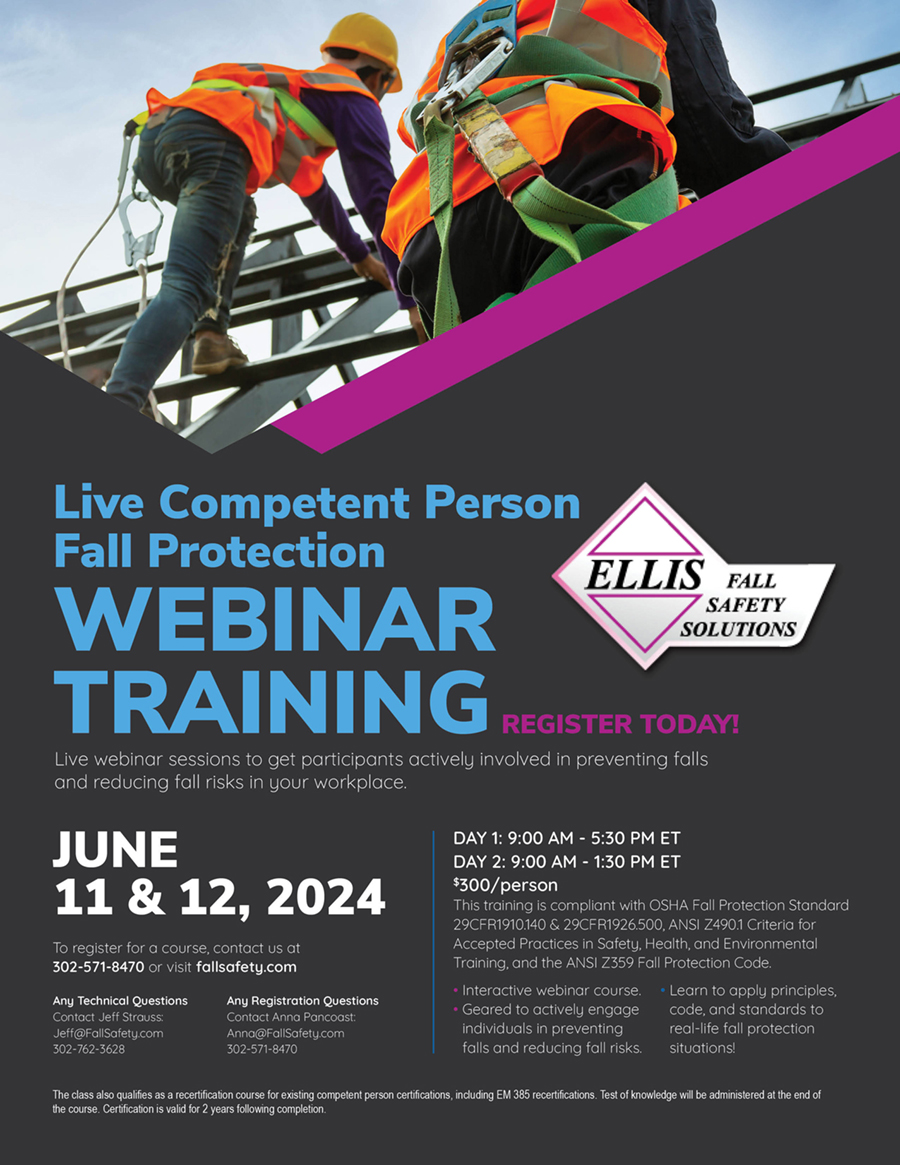Back To FAQ Topics
How do you handle workers that are out of the standard weight range for PFAS, meaning those who either weigh less than 130 pounds (usually women) or those over 310 pounds?
Z359.1 should be the answer to this question, but nothing has been done with this range for the next update of Z359 standards due late 2006. You have to precondition workers with special equipment outside the range and have your suppliers notify you in writing of their proposals for satisfying the needs. Further, you can go to Dr. Ellis’ book “Introduction to Fall Protection, 3rd edition”, on page 152 for guidance on changing test weights. NOTE: The Strength Factor of 1.4:1 of a torso to a human is recently agreed to be closer to 1:1 amongst the leading manufacturers. Additionally, OSHA regulation 1926.500 Appendix C addresses the smaller and larger worker through proportional changes in test weights.
What is the proper distance from the roof edge for a warning line?
15 feet from an edge to locate and mark a warning line is an OSHA interpretation which makes sense to me. The recent and long ago interpretations on roof work by non-roofing workers starting with the early one in the third edition of Dr. Ellis’ book “Introduction to Fall Protection”, indicate that 15 feet makes a non-roofing violator more noticeable than 6 or 10 feet for roofers.
What is the safe distance from a roof edge for those doing work on the roof (not installing the roof)?
None, workers are drawn like magnets to edges but take a look at the OSHA interpretation in Dr. Ellis’ book of what is reasonable. You can set up your own procedures which if enforced will be effective and OSHA-acceptable. Be sure to have a review with a compliance officer when you set up.
Are letters interpretation letters enforceable when used by a CSHO?
Interpretation letters are to be used for guidance only to employers and CHSO’s; no new regulatory requirements are added in an interpretation geared to a hypothetical situation. There are no definitive general rule answers in interpretations.
What sort of fall protection system or program is required for workers that spend 4 hours or more on a platform every two weeks?
This is controlled by OSHA Instruction 01-01-013 that indicates a guardrail is necessary. For work less than 4 hours, an alternative fall protection system is OK. Use of the proposed general industry standard dated 4/10/90 would be acceptable. Washington State has a connection to the equivalent of 1910.66 App. C (soon to beome a horizontal standard in that state, like ladders). You also can use 1910.66 App. C as policy.
What are the criteria for the inspection of Fall Arrest Equipment?
Follow the manufacturer’s instructions. For questions about a manufacturer’s instructions call the manufacturer or a fall protection consultant.
What is happening in the area of certification of fall arrest/protection equipment?
The non-manufacturers on the Z359 comittee voted unanimously in a straw vote to favor independent testing. However the program at Safety Equipment Institute has not been endorsed by all manufacturers. Manufacturers generally disagree with the use of an independent tester because of cost issues.
Under Texas Gross Negligence – who is liable for injuries to an employee at work?
The statutory employer is liable when the employee is killed at work. Only then can this standard be applied against the employer.
How do you handle workers that are out of the standard weight range for PFAS, meaning those who either weigh less than 130 pounds (usually women) or those over 310 pounds?
Z359.1 should be the answer to this question, but nothing has been done with this range for the next update of Z359 standards due late 2006. You have to precondition workers with special equipment outside the range and have your suppliers notify you in writing of their proposals for satisfying the needs. Further, you can go to Dr. Ellis’ book “Introduction to Fall Protection, 3rd edition”, on page 152 for guidance on changing test weights. NOTE: The Strength Factor of 1.4:1 of a torso to a human is recently agreed to be closer to 1:1 amongst the leading manufacturers. Additionally, OSHA regulation 1926.500 Appendix C addresses the smaller and larger worker through proportional changes in test weights.
What is the proper distance from the roof edge for a warning line?
15 feet from an edge to locate and mark a warning line is an OSHA interpretation which makes sense to me. The recent and long ago interpretations on roof work by non-roofing workers starting with the early one in the third edition of Dr. Ellis’ book “Introduction to Fall Protection”, indicate that 15 feet makes a non-roofing violator more noticeable than 6 or 10 feet for roofers.
What is the safe distance from a roof edge for those doing work on the roof (not installing the roof)?
None, workers are drawn like magnets to edges but take a look at the OSHA interpretation in Dr. Ellis’ book of what is reasonable. You can set up your own procedures which if enforced will be effective and OSHA-acceptable. Be sure to have a review with a compliance officer when you set up.
Are letters interpretation letters enforceable when used by a CSHO?
Interpretation letters are to be used for guidance only to employers and CHSO’s; no new regulatory requirements are added in an interpretation geared to a hypothetical situation. There are no definitive general rule answers in interpretations.
What sort of fall protection system or program is required for workers that spend 4 hours or more on a platform every two weeks?
This is controlled by OSHA Instruction 01-01-013 that indicates a guardrail is necessary. For work less than 4 hours, an alternative fall protection system is OK. Use of the proposed general industry standard dated 4/10/90 would be acceptable. Washington State has a connection to the equivalent of 1910.66 App. C (soon to beome a horizontal standard in that state, like ladders). You also can use 1910.66 App. C as policy.
What are the criteria for the inspection of Fall Arrest Equipment?
Follow the manufacturer’s instructions. For questions about a manufacturer’s instructions call the manufacturer or a fall protection consultant.
What is happening in the area of certification of fall arrest/protection equipment?
The non-manufacturers on the Z359 comittee voted unanimously in a straw vote to favor independent testing. However the program at Safety Equipment Institute has not been endorsed by all manufacturers. Manufacturers generally disagree with the use of an independent tester because of cost issues.
Under Texas Gross Negligence – who is liable for injuries to an employee at work?
The statutory employer is liable when the employee is killed at work. Only then can this standard be applied against the employer.

